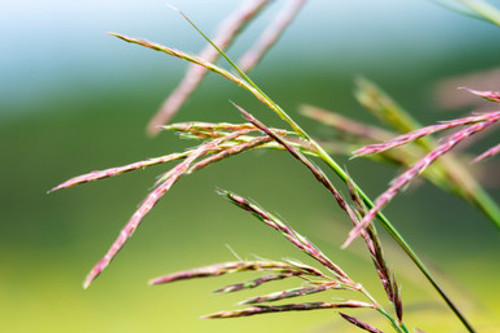


Sand Bluestem
Description
Sand Bluestem, also called Hall's Bluestem, Beardgrass, Prairie Bluestem, or Turkey-Foot. This is a Native, perennial, warm-season bunch grass.
It can grow up to 7 feet tall and is a very long-lived sod former which grows primarily by underground rhizomes. It grows naturally in the US Great Plains. It is found on sandy and light loamy soils in drier Western ecosystems but usually not on heavier or clay soils, nor where annual precipitation is more than 30 inches. Sand Bluestem is traditionally an important part of the climax plant complex in native prairie ecosystems, but due to land-use changes, much of the virgin prairie has disappeared. Mixing Sand Bluestem with grass mixtures can help to bring this species back. As part of the recommendation for native prairie erosion control or wildlife habitat, Sand Bluestem should be included.
Its rhizomes aid in stabilizing sandy soils, it is often used in conservation mixes, and is an excellent forage for all browsing wildlife species. Its large clumps and upright structure throughout the winter make an excellent nesting habitat for many upland birds and small mammals, who also use the seeds as a food source. It has good to excellent forage due to its palatability and high yield and is an important component of many native hay meadows and range pastures.
When cutting the grass for hay, it is important to cut above the newly emerging seedlings to allow them to establish ('High Mowing'). Also, keep the old rule of thumb, "take half and leave half," in mind. Sand Bluestem is increasingly used for xeriscaping and ornamental use due to its low water needs. Plant in mid-summer to ensure adequate soil temperatures for germination and establishment, or dormant seedings after November 1st have also proven successful.
Seeds Per Pound: 125,000 Acre Rate: 6-12 lbs
Zone
Planting Information
Plant Characteristics




